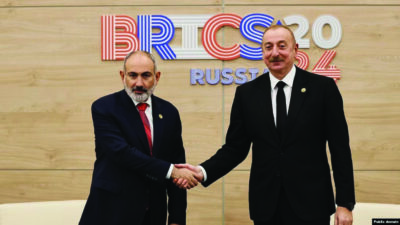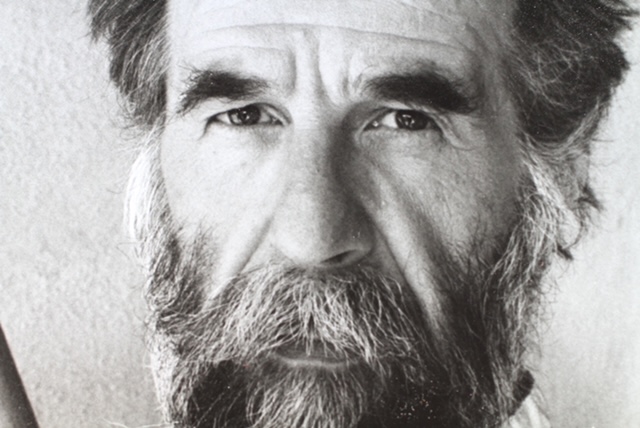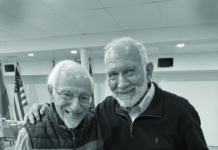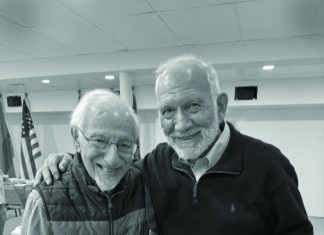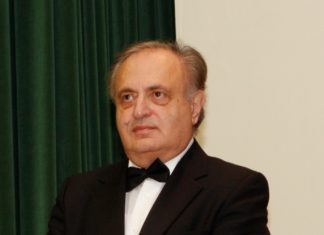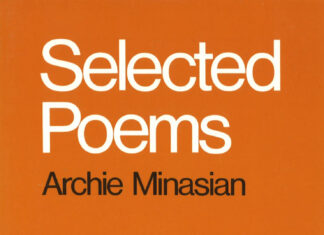Kardash Onnig is on a mission “to heal our troubled planet.” Throughout his long artistic career, the Hudson Valley-based master carver/sculptor has remained true to his premise of transforming a world full of bigotry and violence into one where love and compassion prevail. It is the artist’s strong belief that mankind’s move away from the spiritual and its almost exclusive focus on the material and the visible has put us on the edge of the abyss. The failure of consumerism to fulfill us is all too glaring.
The current state of the world — the ongoing wars, the genocides, the uprooting of entire populations from their millennia-old homelands — evidences the destructive path we are on. The desire for more possessions, larger territories and more power has reduced everything, including human relationships, to a business transaction. Those in power have total disregard for human lives or for moral principles. We are in fact too busy accumulating and “outdoing the other guy” to pause to reflect and to connect with our inner selves. This frenzied rush is perhaps best expressed by the protagonist of Peter Najarian’s 1971 novel, Voyages, Aram Tomasian, born to Armenian immigrant parents in America. “Get up! Get up! To the morning commandment: Thou shalt do something,” conveys Aram’s resentment at the values of a world that cannot accommodate his difference.

Onnig’s art is an invitation to a new paradigm, a new way of thinking that would usher in the spiritual into a world reduced to surfaces and to commodities. In 1994 the artist initiated the Baraka Project, a series of initiatives — mostly books which he gives away — to help bring awareness to our destructive ways. His latest initiative, the book Fasting as Civil Disobedience aims to awaken us to the necessity of “cutting out, eliminating and slowing down.” Fasting is a concept people understand. The fasting metaphor vividly expresses the need to abstain in a culture — especially in the West — oversaturated with possessions. “When we fast, we slow down and create an opening to hear inner guidance. And by doing so, we acquire the strength to transcend the things that hold us down,” notes the artist. Most religions do in fact use the practice of fasting for purification and for spiritual reflection. Abstinence, it is believed, makes it easier to explore the spiritual dimension. “Imagine what would happen if billions of people fasted from the consumption of the news and social media,” wonders Onnig.
Onnig has been constant in his advocacy for change, and because borders and the refusal to embrace the other “limit our ability to change,” he has devoted his decades-long career to forging “a universal consciousness” that would transcend all cultures and civilizations. His “Four Tools of Being” adopts the Quaternary, the principle of four that cultures across the globe have developed or adopted, to help us work together in “peaceful coexistence.” Some of Onnig’s most beautiful artifacts have been created using the “Four Tools of Being.” He has also built Mehian, the Fertility Temple at his Baraka complex, an 11-acre site in Stanfordville, NY, using the principle of four.
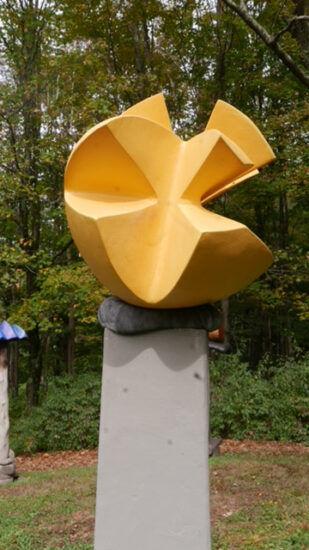
To many, such a vision is an impossibility, an absurdity at best. “You cannot change the world,” his critics argue. Yet the artist keeps on exploring and creating, always inspired by his basic premise of breaking down divisions to achieve peace and harmony. His 2009 GAZA/Rebirth project credits the fifty artists who delivered their message about the effects of war by painting, carving, burning and dressing up the ceramic and manure torsos sculpted by Onnig. The 2021 Collaboration, a book with a title but no author, implies equal participation by the children and the artists of different backgrounds who collaborated on the production of the volume. Art and nature blend in perfect harmony at the Baraka complex. Site-specific installations are permanently displayed on the lush green slopes amidst the surrounding maple, oak and locust trees. Onnig’s use of art as a political tool is yet another instance of blurring boundaries and dismantling dichotomies. “The artist has a duty to stand up against all injustice and brutality,” notes the artist.
While much of what Onnig proposes is elusive, Fasting as Civil Disobedience gives his vision form. In just five pages of text the artist captures the truth of a culture reduced to “our obsession to getting ahead,” “addiction to social media,” “instant gratification,” and so on. “I am going to change the world through civil disobedience,” affirms the visionary, citing Tolstoy, Gandhi, Martin Luther King and other great visionaries that have come before him. In stark contrast to the violence of warfare, the practice of fasting is peaceful, and therefore a viable alternative to the wars that have failed to create the peaceful world they purport to be fought for.
